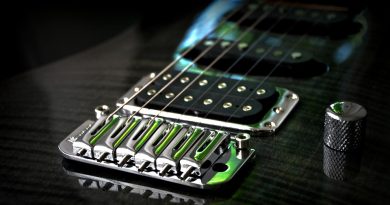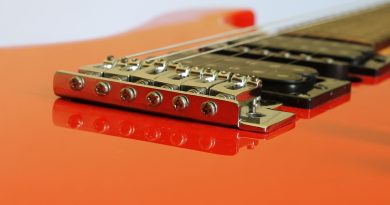Essential Guitar Gear Maintenance Tips Every Player Should Know
Essential Guitar Gear Maintenance Tips Every Player Should Know
As a guitarist, it’s important to not only practice and perfect your skills on the instrument, but also to take good care of your gear. Proper maintenance will not only prolong the life of your equipment, but also ensure that it continues to perform at its best. In this article, we will discuss essential guitar gear maintenance tips that every player should know.
1. Cleaning Your Guitar
One of the most basic maintenance tasks for any guitarist is keeping their instrument clean. Dirt, dust, and oils from your skin can build up on the guitar’s body, neck, and fretboard, affecting its tone and playability. To clean your guitar, use a soft, lint-free cloth to wipe down the body and neck. For the fretboard, use a slightly damp cloth to remove any buildup of grime. Avoid using harsh chemicals or cleaners as they can damage the finish of your guitar.
2. Changing Strings Regularly
Regularly changing your guitar strings is essential for maintaining good tone and playability. Strings can become dull and lose their brightness over time, affecting the overall sound of your instrument. Make sure to change your strings every few months, or sooner if you notice any signs of wear or corrosion. When changing strings, make sure to properly stretch and tune them to prevent them from going out of tune easily.
3. Adjusting the Action
The action of your guitar refers to the height of the strings above the fretboard. If the action is too high, it can make playing more difficult and cause intonation issues. If the action is too low, it can cause buzzing and fretting out. To adjust the action of your guitar, you can raise or lower the bridge or saddle, or have a professional luthier make the adjustments for you.
4. Checking the Intonation
Intonation refers to the accuracy of your guitar’s tuning along the entire length of the fretboard. Poor intonation can cause your guitar to sound out of tune, even when the strings are properly tuned. To check the intonation of your guitar, play the open string and then compare it to the corresponding fretted note. If the fretted note is sharp or flat, you may need to adjust the saddle position to correct the intonation.
5. Maintaining the Nut and Bridge
The nut and bridge of your guitar play a crucial role in maintaining proper string height and spacing. Make sure to keep the nut and bridge clean and free of any buildup of debris. You can use a small brush or compressed air to remove any dirt or dust that may have accumulated. Additionally, you can lubricate the nut slots and bridge saddles with a small amount of graphite to ensure smooth tuning and string movement.
6. Humidity and Temperature Control
Guitars are sensitive to changes in humidity and temperature, which can cause the wood to expand or contract, leading to issues such as fret sprout or neck bowing. To protect your guitar from these issues, store it in a climate-controlled environment and use a humidifier or dehumidifier to maintain a stable humidity level. Avoid exposing your guitar to extreme temperatures or sudden changes in temperature, as this can damage the wood and affect its tone and playability.
7. Protecting Your Guitar When Traveling
If you are a gigging musician or frequently travel with your guitar, it’s important to invest in a good quality case or gig bag to protect your instrument from damage. Make sure to properly secure your guitar in its case or gig bag and avoid placing heavy items on top of it. Additionally, loosen the strings slightly before packing your guitar to relieve tension on the neck and prevent damage during transit.
In conclusion, taking good care of your guitar gear is essential for maintaining its tone, playability, and overall performance. By following these essential maintenance tips, you can ensure that your guitar remains in top condition and continues to bring you joy and inspiration for years to come. Remember, a well-maintained guitar is a happy guitar!






